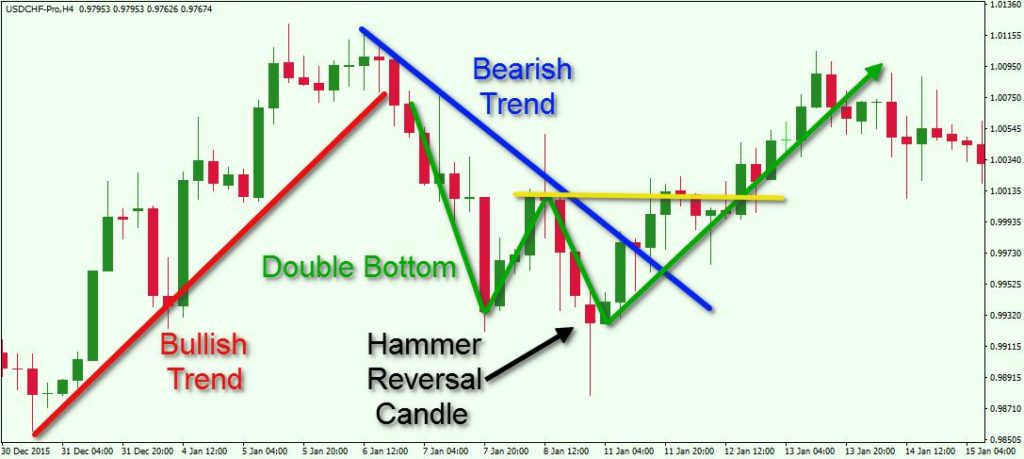Forex trading success often hinges on the ability to analyze market trends effectively. Whether you’re trading short-term price movements or making long-term investments, understanding technical and fundamental analysis is critical for informed decision-making. This guide introduces you to the basics of analyzing forex market trends and equips you with valuable insights to elevate your trading game.
What is Market Trend Analysis?
Market trend analysis refers to the process of identifying and understanding the direction in which a currency pair's price is moving. Trends can be categorized as:
- Uptrend: Prices rise consistently, forming higher highs and higher lows.
- Downtrend: Prices fall steadily, creating lower highs and lower lows.
- Sideways Trend: Prices fluctuate within a range, showing little directional movement.
Trend analysis helps traders determine when to enter or exit trades, maximizing profit potential while minimizing risk.
Technical Analysis: Studying Price Patterns
Technical analysis involves examining historical price data to forecast future price movements. It focuses on charts and indicators to identify patterns, trends, and potential trading opportunities.
1. Reading Candlestick Charts
Candlestick charts are a cornerstone of technical analysis. They provide valuable insights into price action, highlighting open, close, high, and low prices for a specific time period. Key candlestick patterns include:
- Bullish Patterns: Signals potential upward movement (e.g., Hammer, Engulfing).
- Bearish Patterns: Indicates likely downward movement (e.g., Shooting Star, Evening Star).
2. Identifying Support and Resistance Levels
Support refers to a price level where demand is strong enough to prevent further decline, while resistance indicates a level where selling pressure prevents further price increases. These levels help traders:
- Identify entry and exit points for trades.
- Predict possible price reversals.
- Set stop-loss and take-profit orders to manage risk.
3. Using Indicators and Oscillators
Technical indicators are mathematical calculations based on price, volume, or open interest data. Popular indicators include:
- Moving Averages: Highlights overall price trends by smoothing out fluctuations.
- Relative Strength Index (RSI): Measures momentum and identifies overbought or oversold conditions.
- MACD (Moving Average Convergence Divergence): Tracks price momentum and trend strength.
Fundamental Analysis: Assessing Economic Drivers
While technical analysis focuses on price behavior, fundamental analysis examines the factors that drive currency movements. Traders use economic data, geopolitical events, and central bank policies to anticipate price shifts.
1. Key Economic Indicators
Economic indicators reveal the health of a country’s economy and can significantly impact currency values. Examples include:
- Gross Domestic Product (GDP): Measures economic growth; higher growth often leads to currency strength.
- Employment Data: Strong job numbers can boost a currency’s value, while weak data may lead to depreciation.
- Inflation Reports: Rising inflation can prompt central banks to increase interest rates, strengthening the currency.
2. Impact of Central Bank Policies
Central banks play a vital role in forex markets through monetary policies such as interest rate adjustments and quantitative easing. Traders monitor central bank statements for clues about future policy actions.
3. Geopolitical Events
Political stability, trade agreements, and global events—such as wars or natural disasters—can influence currency values. Traders must stay informed about news that could affect market sentiment.
Combining Technical and Fundamental Analysis
The most effective forex traders combine technical and fundamental analysis to create a comprehensive trading strategy. While technical tools provide short-term insights, fundamental factors guide long-term decisions. For example:
- Use candlestick patterns and indicators to identify entry points.
- Monitor central bank announcements or economic reports to confirm trend direction.
- Adjust trading plans based on evolving geopolitical or market conditions.
Final Thoughts
Mastering market trend analysis is an essential skill for any forex trader. Technical analysis empowers you to decode price charts, while fundamental analysis allows you to understand the economic forces behind market movements. By combining these methods, you can gain a deeper insight into the forex market and increase your chances of trading success.
Let this guide be your starting point, but remember that continuous learning and adapting your strategies are key to thriving in the ever-evolving world of forex trading.







Comments On This Post